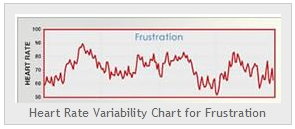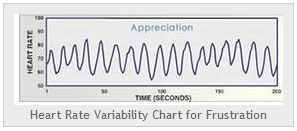Boulder Biofeedback at Interactive Brain Analysis
What is biofeedback?
Biofeedback is an important set of tools that we use at Interactive Brain Analysis. The techniques are well established in science. One of the most known non-medical applications is the lie detector.
More often than not, physical problems, such as over-breathing, are at the core of mental problems. By measuring, analyzing and instantly displaying these physiological responses, you can quickly learn to adjust, with often a profound impact on your mental state.
Neurofeedback
A very specialized form of biofeedback is EEG neurofeedback, which measures in real time your brain waves. Interactive Brain Analysis is a Boulder specialist in neurofeedback. Go to our dedicate page to learn more about EEG neurofeedback and QEEG Brain Mapping.
Biofeedback for athletes
Biofeedback is also used to improve performance to peak levels. Athletes, who are pushing the limits, must understand their physiology in order to progress. Biofeedback gives them that understanding.
Biofeedback uses medical sensors, applied to the body, which mirror back the autonomic nervous system. Sensors measure heart rate, skin response (sweating), muscle tension, breaths, and many other variables. Sophisticate software analyses the captured data, and gives both the client and the therapist an instant information to which they can respond. This feedback loop then becomes a training tool that shows the client how to positively change their physiology so they can change their life. Biofeedback offers a unique window into your being which inspires you to take control and gradually move your whole system towards optimum balance.
Top 5 biofeedback techniques:
1. Capnometry measures Carbon Dioxide (CO2) blow off. It correlates to how much oxygen gets to the body’s tissue and organs, including the brain, and facilitates the balance of acidity levels in the body. Chronic over-breathing (CO2 deficiency) may trigger symptoms of phobias, anxiety, panic attacks, attention disorder, depression, asthma, depression, sleep disturbances, allergy, and many other body pain responses. Most of us think our breathing is just right, which may not be the case at all.
2. Heart Rate Variability (HRV) is a measurement of beat-to-beat changes in heart rhythms. Numerous studies show HRV is a key indicator of physiological resiliency and behavioral flexibility, and can reflect an ability to adapt effectively to stress and environmental demands. Heart Rate Variability, and through it our response to outside pressures, can be influenced by breathing techniques.
3. Galvanic Skin Response (GSR): measures sweat gland activity. When a person is tense or emotional, the sweat glands become more active. GSR may also be used in anger management, desensitization and relaxation training.
4. ElectroMyoGraph (EMG): displays muscle tension and can be used to reduce tension in the body. The tension in the body is often a mirror image of tension in the mind.
5. Temperature: A thermometer detects skin temperature of the fingers which reflect the flow of circulation and energy in the body.
A very specialized form of biofeedback is neurofeedback, which measures in real time your brain waves. Go to our dedicate page to learn more about neurofeedback.
Find all our pages about biofeedback her.


